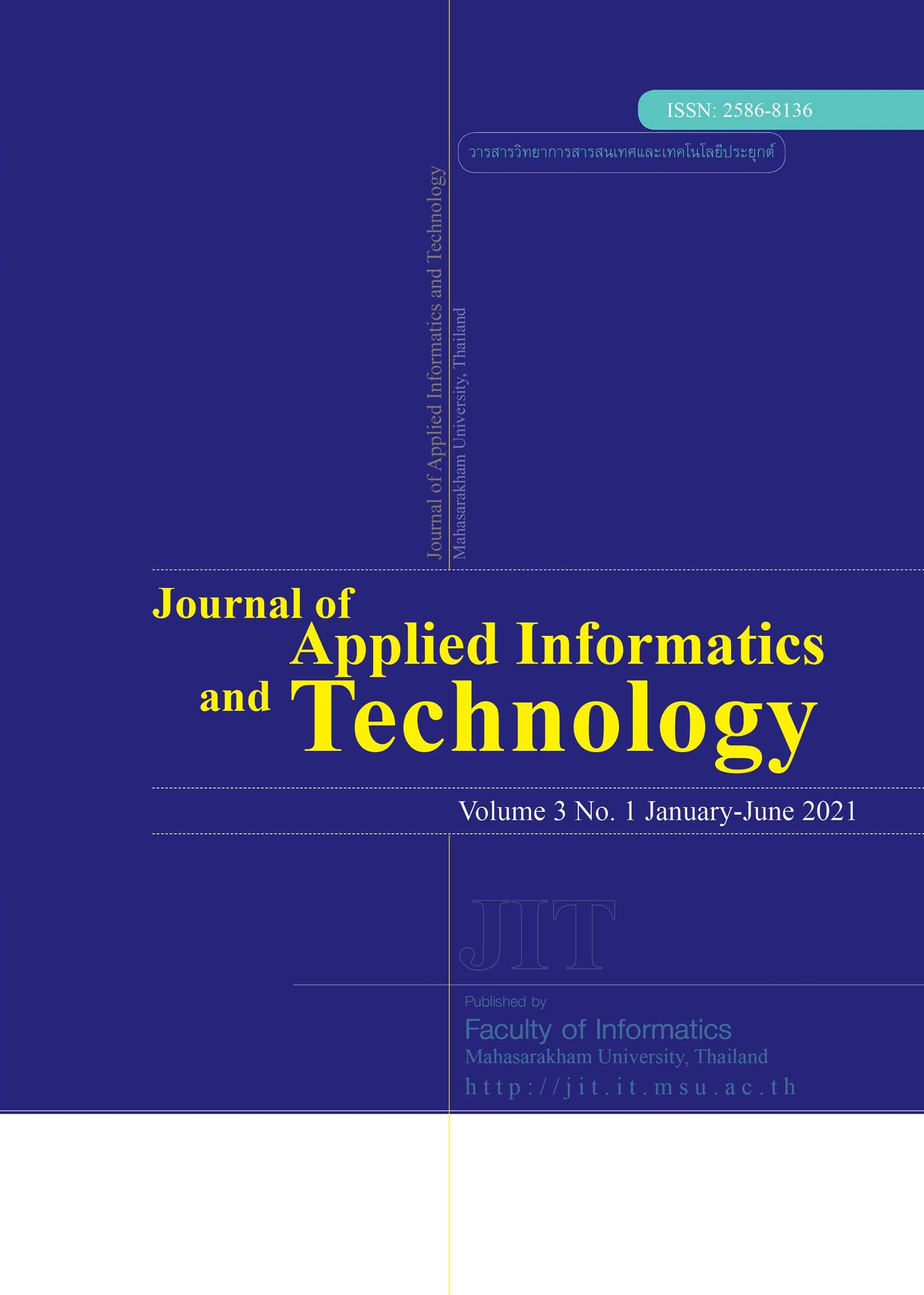The Application of a Face Recognition System For a Personal face Database
Main Article Content
Abstract
This study aimed to apply face recognition of the personal face detection, which this system implemented Eigenface to analyze face details in facial comparison database. Eigenface is an approach in the theory of principal component analysis (PCA). It was accepted that facial images could be synthesized based on data from the model and can store a person’s face parameters in a small set of numbers, which is accurate and reliable. The data used in the assessment of effi ciency and developed software, including 30 images. It was divided into three groups, and each group contained ten images. The experimental results were shown as follows ; the fi rst dataset contained ten images with an image resolution of 100x100 pixels. We achieved a precision of 90%. The second dataset also contained ten images with an image resolution of 150x150 pixels. The result showed that we achieved a precision of 80%. The third dataset included ten images with a resolution of 200x200 pixels. We achieved a precision of only 70%. Our proposed system achieved a mean precision of 80% and was considered as good efficiency. It can be applied for application in criminal face detection.
Article Details

This work is licensed under a Creative Commons Attribution-NonCommercial-NoDerivatives 4.0 International License.
All authors need to complete copyright transfer to Journal of Applied Informatics and Technology prior to publication. For more details click this link: https://ph01.tci-thaijo.org/index.php/jait/copyrightlicense
References
Atalay, I., & Gökmen, M. (1996). Face recognition using Eigenfaces. SIU1996, Antalya, Turkey, 151-156.
Çarıkçı, M., & Özen, F. (2012). A face recognition system based on Eigenfaces method. Procedia Technology, 1(2012), 118-123.
Davis M., Popov, S., & Surlea, C. (2010). Real-time face recognition from surveillance video. Intelligent Video Event Analysis and Understanding, 332, 155–194.
Hamid, R.A., & Thom, J.A. (2010). Criteria that have an effect on users while making image relevance judgements. In the fifteenth Australasian Document Computing Symposium, 76-83.
Henry, A. (2012). Five best webcams. Lifehacker. Retrieved 29 March 2021, Retrieved from https://lifehacker.com/five-best-webcams-5961369
Karaduman, B. (2008). Relevant component analysis. [Thesis, YıldızTechnical University, Turkey].
Kotropoulos, C., & Pitas, I. (1997). Rule-based face detection in frontal views. In International conference on Acoustics, Speech, and Signal Processing, 2537-2540.
Lin, S.H. (2000). An introduction to face recognition technology. Informing Science Special Issues on Multimedia Informing Technologies, 3(1).
Marciniak, T., Drgas, S., & Cetnarowicz, D. (2011). Fast face location using AdaBoost algorithm and identification with matrix decomposition methods. In the International Conference on Multimedia Communications, Services and Security, 242-250.
Rathi, R., Choudhary, M., & Chandra, B. (2012). An application of face recognition system using image processing and neural networks. International Journal Computer Technology Application, 3(1), 45-49.
The Database of Faces (AT&T), Retrieved 20 March 2021, Retrieved from https://git-disl.github.io/GTDLBench/datasets/att_face_dataset/
Tolba, A.S., El-Baz, A.H., & El-Harby, A.A. (2005). Face recognition: A literature review. International Journal of Signal Processing, 2(2), 88-103.
Turk, M., & Pentland, A. (1991). Eigen faces for recognition. Journal of Cognitive Neuroscience, 3(1), 71-86.
Yang, G.Z., & Huang, T.S. (1994). Human face detection in a complex background. Pattern Recognition, 27(1), 53-63.
Yang, M.H., Kriegman, D.J., & Ahuja, N. (2002). Detecting faces in images: A survey. IEEE Transaction on Pattern Analysis & Machine Intelligence, 24(1), 34-58.






